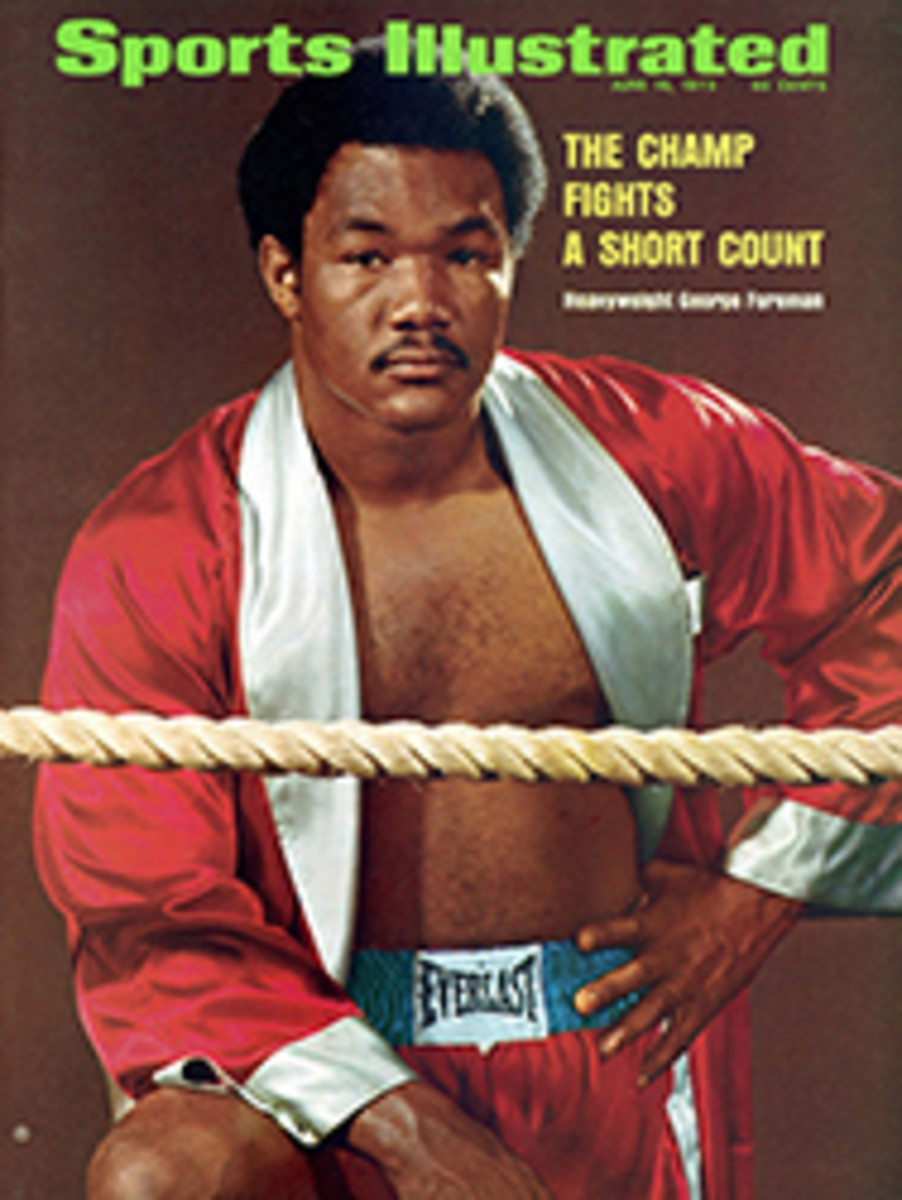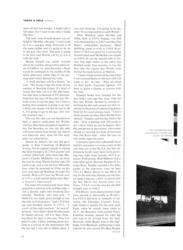
SCORECARD
THE SKULKERS
According to the New Jersey Bureau of Wildlife Management, the average hunter spends more than $700 on travel and equipment for each deer he kills legally. Poaching deer is cheaper, and profitable. Poached venison is vastly less expensive than beef, pork or lamb bought at inflated supermarket prices, but it is going up, too.
One Pennsylvania poacher, who kills deer to fill orders and has been doing so for a quarter of a century, used to get $10 for a deer of average size. Now his price has gone up to $15. "Where else can you buy 90 pounds of meat for $15?" he asks. Since September, he estimates, he has killed 40 deer and either eaten or sold the lot.
The reason the poacher succeeds where the honest hunter fails is that the poacher is undeterred by laws regulating seasons, he hunts at night by jacklight and, in New Jersey for example, he has to contend with a mere 35 wardens policing three million acres of deer range. Poaching with powerful flashlights is so easy in some areas, conservation officers have demonstrated, that a deer can be spotted every three or four minutes. Fines, usually $100 to $300 for first offense, are too trivial a deterrent.
Confiscation of weapons might be a partial answer, but that is not yet on the lawbooks.
HIGH PRICE OF MUSCLE
It has a strange sound, coming from the executive director of the Canadian Football League Players' Association, but Gerry Patterson, who also is agent for many individual athletes, says that management in professional sport should take steps to halt the upward spiraling salaries of players.
The average player's salary in the National Hockey League, Patterson said at a Toronto sports seminar, is approaching $42,000, and in the National Football League it is $28,000, in the Canadian Football League $16,000, in the National Basketball Association $50,500, in major league baseball $32,000.
"My personal opinion is that salaries are going to have to level off and I think we're approaching that point now," said Patterson. "I do think we all have to consider what is happening to sport generally with this high level.
"Profit is not a four-letter word. We have to have clubs making money to have sports continue at a profitable level."
THE WELL-BALANCED BOOK
On the eve of the English Derby at Epsom Downs—which was reported, incidentally, to have attracted a million spectators scattered over a vast area—William Hill, a leading English bookmaker, had a most interesting ante-post book.
If one of four horses out of the 25 starting were to win, Hill's stood to lose amounts ranging from £21,951 for a Ksar victory to a mere £4,524 for a win by Sea Pigeon. Victory by any of the other 21 horses would have resulted in a handsome profit for the book.
As it turned out, Morston, a 25-to-1 outsider, broke through in the final furlong and Hill's had to pay out £6,250 to someone who had wagered £250 on him. That was the biggest single wager laid on Morston. Other individual bets, losers, went as high as £1,000, and would have paid as high as 10 to 1 on Ksar and 100 to 1 on Sea Pigeon.
With Morston the winner, Hill's came out ahead by £44,202, establishing once more that you can beat a race but not often the bookies.
HOW TO PICK A PRESIDENT
Sports fans sometimes wonder how those in authority in the fun and games field happened to be picked for their jobs. In the case of Roger Rousseau, president and commissioner-general of Montreal's 1976 Summer Olympics, there is no mystery. He was picked by a computer. Or so he says.
At the time that he was chosen, Rousseau was Canadian ambassador in Cameroon, West Africa, far from Montreal.
"When Mayor Drapeau asked the Canadian government for a man for this job," he explained, "he said he wanted someone youngish [Rousseau is 52], experienced in economics, bi- or trilingual and with a French name.
"This data was all fed into a computer in Ottawa—and I came out."
AN ASSIST FOR BAMBI
Golf's birdie of the year, up to now, has been registered by Carl G. Cassel of Palmyra, Pa. Cassel had the help of a friendly two-point buck deer.
The golfer's second shot landed 12 feet from the pin at the par-4, 390-yard 9th green at Manada Golf Club. The deer, which had been following golfers around the course for a week, receiving handouts of salt and sugar, used his nose to nudge the ball a foot or so closer to the hole.
What Rule of Golf applied in such a situation? Cassel could find none and stroked the ball into the cup for a 3. He should have moved it back to where the deer's nose touched it.
DUCKS AND DRAKES IN MARYLAND
There is a new waterfowl feeding law in Maryland, which previously had none. It conflicts with federal regulations and it is sure to drive the duck and goose hunter out of his rig.
Federal regulations ban baiting, which is defined as the feeding of migratory birds to lure them within hunting range. The bait need not be near enough to the shooting area to make it possible to shoot the birds while they are feeding; if the bait is placed in such a manner that it even induces birds to fly near gunning sites while going to and from the baited area, the feds contend that that is a violation. The regulations make no mention of a distance between the location of the bait and the shooting site. All that must be proved is that the birds were influenced by the presence of bait.
But the new Maryland law allows the feeding of waterfowl at a distance of 400 yards or more from a shooting site. Arguments pro included the contention that waterfowl should be fed because natural food is in short supply and that the resultant kill would be negligible.
Maybe so, but Clark Bavin, who is chief of enforcement for the U.S. Fish and Wildlife Service, while "analyzing" the Maryland law, said that "the federal law still prevails...and is supreme in such matters."
In fact, a Maryland hunter has been found guilty in federal court of placing bait 1,237 measured yards from a shooting site. Another case involved a distance of 800 yards.
Sherley Ewing, a waterfowl hunter who promoted support for the new state law, says that it will do much to solve a crop depredation problem caused by waterfowl. But Willie J. Parker, chief of enforcement for Maryland's FWS, checked his files and found only one complaint concerning crop damage inflicted by waterfowl during hunting seasons.
ATTENTION BOBBY RIGGS
Watching a golfing couple teeing off at Riverside Municipal Golf Course in Portland, Maine, John Flaherty, a brash 18-year-old, observed that he could do the nine holes in less than 50 strokes. Using a putter. He had two instant bets.
It was 7:10 p.m., with darkness not too far off. The course was all but afloat from a long, damp spring and the weather was a mixture of mist and rain.
Flaherty took a 7 on the 1st hole, while his opponents smirked. He did get a par on the 2nd but achieved a triple bogey 6 on the 3rd. Then he began banging his tee shots 180 yards with natural fade. He found only two traps, both of which were shallow enough for him to escape with little damage, and he played holes five through nine 6-4-4-5-6. Forty-five minutes after departure he was back in the clubhouse with a 46. And money.
Flaherty had been practicing using his putter as a driver for some time, it turned out.
ANOTHER NAME WOULD SMELL
Parents do like to give their children nice-sounding names and, after waiting eight years for a son, the parents of Alan Gallagher, California Angel third baseman, christened him with every name both of them liked. It came out Alan Mitchell Edward George Patrick Henry Gallagher.
His teammates call him Dirty Al.
THE OPPOSITE FIELD
The effects of the Little League program on immature youngsters who are unable to endure the stresses of competition and the pangs of defeat have long been deplored. Now comes a man with credentials in sport and psychiatry with suggestions as to how the problem can be alleviated.
He is Dr. Thomas Johnson, San Diego child psychiatrist and onetime Little League player, manager and umpire. Dr. Johnson thinks well of the benefits to be derived from Little League baseball, and his ideas, previously expressed to a Little League convention, have now been put in pamphlet form for distribution to League presidents.
For one thing, Dr. Johnson says, when a boy comes home in tears after committing errors and helping thereby to lose a game, the best thing to say to him may be nothing at all.
"There are parents who react with anger and that's destructive," he says. "But saying 'There's always next year,' or 'It's just a ball game' might be of little value, too, to someone who's just lost. It's like saying, when a child's dog dies, 'We'll get you another dog.' That's superficial and almost cruel. When your own dog dies there is no other dog. In the same way, a child needs to have his loss taken seriously. Minimizing of pain is not helpful."
What the parent should do, he explains, is first of all to listen and "find out what level of sadness the child feels.
"Having someone who understands is so helpful. Time will take care of the rest."
And Little League competition is useful, he adds, because children can benefit from reasonable pressure.
"You need obstacles to overcome. The motivation for much of early learning in infancy is frustration.
"Adults can help children handle the pressure of competition in two principal ways, by example and by keeping success and failure in perspective," Johnson says.
"Our children always observe us in moments of disappointment—the way we react when we find out we owe $60 more on our income tax, when the car repair bill is higher than we thought, when our bowling team doesn't win," he notes. "The example we set is No. 1.
"No. 2 is learning to praise efforts, not results."
HOW, INDEED?
The Women's Lib movement for equality in sport is not nearly so simple as it would seem to be to convinced advocates of either side. Responding to a recent federal court ruling, the board of control of the Ohio High School Athletic Association has ruled that girls are eligible to compete with boys in seven non-contact sports—cross-country, water polo, swimming, gymnastics, golf, tennis and track and field.
All well and good, so far. It is expected that very few girls will be able to crack varsity lineups in what previously has been an all-male domain. But what if boys decide to go out for what previously have been all-girl teams? With furrowed brow, Dr. Harold Meyer, commissioner of the association, reads the federal decision to mean that not only can a girl go out for boys' teams but that boys could very well try out for girls' teams.
"We're trying to discourage this, of course," he said. "We have no fears about girls taking over boys' teams, but there certainly is concern that the boys could take over the girls' teams.
"When you have a girls' tournament in the future, how can you know all boys won't show up?"
ILLUSTRATION
THEY SAID IT
•Chris Dundee, fight promoter: "I'd love to be a procrastinator, but I never seem to get around to it."
•Steve Sloan, new Vanderbilt football coach: "My special trouble is that I am now head-coaching one of the teams I'd want to play."

